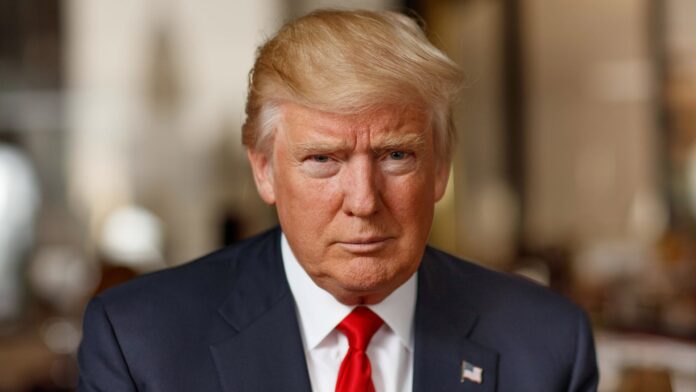U.S. Supreme Court, has ordered the Trump administration to pay out nearly $2 billion in foreign assistance funds that were previously frozen. The funds were meant for nonprofit aid organisations working on behalf of the U.S. government, and the court’s decision forces the administration to comply with a district court’s order to release the money.
The Supreme Court ruled 5-4, with Chief Justice John Roberts and Justice Amy Coney Barrett joining the liberal justices in the majority. The court did not provide detailed reasons for the decision but instructed the lower court judge to clarify what obligations the government must meet to ensure compliance with the order. It also noted that the feasibility of any timelines for compliance should be taken into consideration.
This ruling follows a legal battle that started when the Trump administration froze foreign aid payments, impacting various nonprofit organisations that rely on these funds to carry out their work. The freeze began after an executive order issued by the former president, aimed at reducing U.S. foreign aid spending. The order specifically targeted payments to nonprofit groups supporting U.S. government missions abroad, and it sent shockwaves through the sector, leaving many organisations struggling to continue their operations.
U.S. District Court Judge Amir Ali, who was appointed by former President Biden, issued a temporary restraining order in February 2025, which required the Trump administration to resume the payments. However, the Trump administration refused to comply, arguing that it should be exempt from the order due to claims of “sovereign immunity” — the legal principle that prevents government entities from being sued without their consent.
The U.S. Supreme Court’s ruling on March 5, 2025, ordered the Trump administration to release the $2 billion in foreign assistance funds, which had been frozen. Despite the sharp division among the justices, with a 5-4 vote, the majority ruled that the payments should be made, acknowledging the critical role these funds play in supporting international aid programmes. The court also tasked the district court with clarifying the steps necessary for the government to fulfil its obligations under the restraining order.
Justice Samuel Alito, who dissented from the majority opinion, expressed his surprise and concern over the decision, arguing that a district court judge likely lacked the jurisdiction to compel the U.S. government to release such a substantial amount of taxpayer money. In his dissenting opinion, Justice Alito remarked, “Does a single district-court judge who likely lacks jurisdiction have the unchecked power to compel the Government of the United States to pay out (and probably lose forever) $2 billion taxpayer dollars? The answer to that question should be an emphatic ‘No,’ but a majority of this Court apparently thinks otherwise.”
The ruling has been welcomed by many of the nonprofit organisations that had been affected by the payment freeze. These groups, which work in areas such as humanitarian aid, global health, and economic development, had been struggling to keep their operations running without the U.S. funding. Some organisations were teetering on the brink of bankruptcy, unable to continue vital work such as providing healthcare, education, and disaster relief without the aid.
One nonprofit representative expressed relief, saying, “This ruling is a lifeline. It allows us to continue our work in communities that need it most. Without this aid, our ability to help people would have been severely compromised.” Many aid groups are now hopeful that the payments will resume soon, allowing them to fulfil their commitments and continue supporting people in need across the world.
The Trump administration, which had initially implemented the freeze through an executive order, did not immediately comment on the Supreme Court’s ruling. However, lawyers from the Department of Justice acknowledged that the administration had failed to comply with the temporary restraining order issued by Judge Ali. They had argued that the payments should not be made due to concerns over “sovereign immunity,” but the court rejected this argument.
In the lead-up to the ruling, officials from the Trump administration had defended the decision to freeze foreign aid. Pete Marocco, a senior official in the U.S. Agency for International Development (USAID), who was responsible for overseeing the implementation of the freeze, argued that some areas of foreign aid required “radical change.” He claimed that the freeze was necessary to prevent “nefarious actors” from making illegal payments and to regain control over the distribution of funds.
Marocco had stated in a meeting with aid representatives that payments would resume for organisations with existing contracts, but many of these organisations reported that the payments remained frozen.
With the Supreme Court’s ruling, the Trump administration is now under pressure to release the $2 billion in foreign aid funds. The court did not set a specific deadline, but it has instructed the district court to clarify the government’s obligations. This means that while the ruling requires the administration to pay out the funds, the details of how and when this will happen are still to be determined.
The decision is expected to have significant implications for future foreign aid policies, as it underscores the importance of judicial oversight in ensuring that the U.S. government fulfils its obligations to international partners and nonprofits. It also highlights the potential challenges governments may face when attempting to freeze or alter foreign aid payments, particularly when those actions are seen to conflict with legal orders.
This case is part of a broader debate over the future of U.S. foreign aid. Critics of the Trump administration’s freeze on aid argue that it undermines efforts to promote peace, stability, and economic development in vulnerable regions. They believe that cutting or withholding foreign aid can have far-reaching consequences, including increasing instability and exacerbating humanitarian crises.
On the other hand, supporters of the freeze have argued that the U.S. should reconsider its foreign aid spending and focus more on domestic priorities. They view foreign aid as a tool that should be used more strategically, with a focus on ensuring that it reaches the right recipients and is used effectively.

